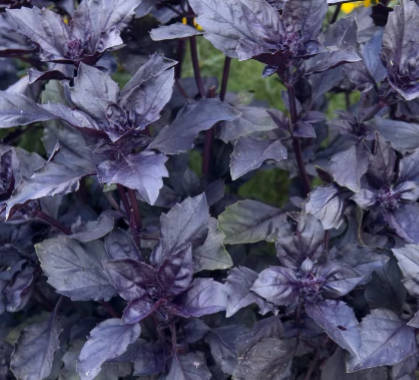The idea of companion planting is a broad term used to describe a method of grouping plants together for mutual benefits, whether it is for pest preventing or growth.
And it can get really complicated if you let it. In this post I talk about companion strategies we use here in our veggie patch.
Does companion planting work?
Yes and no. A lot of the information you will find is mostly relevant to the northern hemisphere where they have different pest and diseases. It does seem to be more effective for food growers up there. Down here in Australia however, we have a whole sway of other issues.
A common ‘companion planting combination is Basil and Tomatoes. Does it make the tomatoes sweeter? Not from my experience. Does it deter the pests that love my tomatoes. Not that I can see. I’ve not seen any benefit of basil living near tomatoes, aside from being able to grab all the ingredients for a yummy bruschetta.
There are no hard and fast rules when it comes to what works. What works for me, may not necessarily work for you. There are so many variables that come into play so it’s really important to do your own observations in your space.
The three main ways that I integrate companion planting that I’ve found to be effective are:
- Distraction - Ensuring plenty of diversity and avoiding monoculture planting techniques
- Similar requirements - Grouping plants that have the same needs together
- Attraction - Attracting beneficial insects
Let’s dig in.
Distracting bad bugs
I love a good ordered row of veggies, yes I am sooo guilty of it BUT I know if I do it too much I am going to get issues.
Planting an entire bed of the same thing or even having rows of the same veggies is essentially putting all your eggs in one basket, and you end up creating a highway of goodies for pests that love your specific crop. You’ve just made it too easy. The bugs will just bounce from one plant to the next. Instead of losing one plant you lose the lot. If you still love order you can still do that, but just do it in a way that your plants aren’t right next to each other. Think diagonals and other fun shapes and groupings.
Of course there are always exceptions to the rules so keep in mind that there are plants that need to be grouped together for pollination, corn is a good example of this.
By avoiding rows and groups of the one plant and interplanting different varieties you also get the benefits of camouflage. Some specific bugs will be attracted to their preferred crop by shape and colour or smell. By interplanting plants that create different silhouettes or have strong smells, you can potentially mask the target plant.
By mixing it up if you get issues, the losses would be minimal if you were to have all your plants in the one area they are likely going to share the same issues. For example keeping all your brassicas in the one place is an express invitation for the white cabbage butterfly. If you mix it up and scatter things around you may find that you won’t have as much destruction.
The beauty of growing your own food is you’re not a market gardener. You don’t need easy access to a lot of the same plants all at once. Therefore there is no real benefit of having all the same things in one spot.
Grouping plants with similar requirements
There's a couple of points to this, this is about ideal conditions, competition and also plants that can inhibit the growth of others.
Some plants like alkaline like beetroots, some like acid, like strawberries.
There are plants that are heavy feeders and need loads of nitrogen for leaf development. Whilst others need to put all their energy into root growth.
Some plants like it wet, some like it dry.
There are plants that will bring up nutrients from deep in the ground to the benefit of the shallow rooted plants above like comfrey, and others can be nitrogen fixing like legumes.
Some plants can also inhibit growth of others, whether it be by being resource hogs or emitting substances that some plants don’t love. I notice that if I plant sunflowers, as much as I love them. Everything around them suffers! Onions and garlic can also have this affect on certain plants too.
These are things to consider when you are planting out your garden, but the key thing you need to consider is keeping the competition down - make sure all your plants are getting the right amount of sunshine, nutrients and moisture they need.
Attracting the good guys
You can address this in two ways - Firstly by attracting the bad guys to a sacrificial crop, you’ll eventually get the good guys to arrive but not before the population explodes and you’ve lost that crop. This would only be recommended if you have a huge area to play with.
OR put your energy into attracting the good guys to deal with the bad guys.
Interplanting flowers amongst your veggies is going to help with bringing in the good bugs. Having a good diversity of plants that provide food (usually nectar producing flowers) and shelter is the key here.
So to wrap up the key to companion planting is really about understanding the individual needs of each plant and using that to your advantage, having a good diversity of plants and providing safe places for your beneficial insects to hang out.
If you want to read up on this more, I highly recommend Jackie French's Companion Planting book as it seems the most relevant to our Australian conditions.
Dirt lover members can grab all my companion planting combinations in the portal.
I’d love to know what your companion planting strategies are? Leave a comment below







